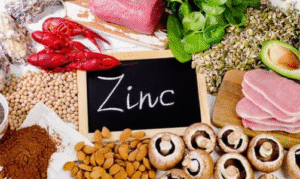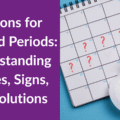
Top 20 Foods Containing High Levels of Zinc
About Zinc – What Is It & Why We Need It
Zinc is an essential trace mineral involved in over 300 enzymatic reactions in the body—supporting immune function, wound healing, DNA synthesis, growth, and sensory capabilities like taste and smell. Unlike some nutrients, your body can’t store zinc, so it’s important to consume zinc rich foods regularly .
Global Zinc Deficiency: A Statistical Snapshot
- Nearly 2 billion people—around 25% of the global population—are at risk of inadequate zinc intake, with high-risk regions including South Asia and Africa
- Zinc deficiency contributes to childhood mortality, affecting growth and immunity
Why Zinc Matters?

- ✅ Essential for immunity: Activates T-cells and reduces infection risk
- ✅ Supports growth & development: Especially important during pregnancy and adolescence
- ✅ Accelerates wound healing: Zinc promotes tissue repair
- ✅ Improves skin & hair health: Supports collagen formation
- ✅ Assists in fertility & hormone balance: Zinc plays a role in ovulation and sperm production
Recommended Daily Zinc Intake (RDA):
- Men: 11 mg/day
- Women: 8 mg/day
- Pregnant/Breastfeeding: 11–12 mg/day
Zinc-Rich Foods for Vegetarians vs Non-Vegetarians

Here’s a comparison table of zinc heavy foods, divided by dietary preference.
| Vegetarian Foods | Zinc Content | Non-Vegetarian Foods | Zinc Content |
| Pumpkin Seeds | ~2.2 mg (28g) | Oysters (top source) | 28–32 mg (85g) |
| Hemp/Sunflower/Sesame Seeds | 2–3 mg (3 tbsp) | Beef (roasted) | 3.8 mg (90g) |
| Cashews | 4.8 mg (50g) | Crab (cooked) | 3.2 mg (90g) |
| Almonds | ~0.9 mg (28g) | Pork Chops | 2 mg (100g) |
| Peanuts | 1.5 mg (28g) | Lobster | 3–6 mg (90g) |
| Lentils (cooked) | 1.3 mg (1 cup) | Chicken (dark meat) | 1.4–1.5 mg (90g) |
| Chickpeas (boiled) | 1.2 mg (1 cup) | Eggs | 0.6–1.0 mg (1 egg) |
| Tofu (firm) | 1.8 mg (100g) | Milk | 1.0 mg (1 cup) |
| Whole Grains (oats, quinoa, rice) | 2.3–2.8 mg (1 cup) | Yogurt | 1.0–1.5 mg (1 cup) |
| Dark Chocolate (70–85%) | 3.3 mg (100g) | Cheese (cheddar) | 1.2–1.5 mg (45g) |
Food Strategies to Maximize Zinc Intake
- Animal-based routes: Include lean meats, shellfish, eggs, and dairy for better zinc absorption.
- Boost plant-based zinc: Soak, sprout, ferment legumes & grains to reduce phytates and enhance zinc uptake
- Fortified foods: Zinc-fortified breakfast cereals can contribute ~25% of DV per serving
Sample Daily Plan
- Breakfast: Fortified oatmeal + milk
- Snack: Yogurt + nuts/seeds
- Lunch: Lentil salad with pumpkin seeds and tofu
- Dinner: Beef or stir-fried vegetables with soy/tofu
- Treat: A few oysters or bit of dark chocolate
Safety
- Daily need: 8 mg for women, 11 mg for men; upper safe limit is 40 mg
- Too much zinc: May cause nausea, headaches and impair copper/iron absorption
Should You Take Zinc Supplements?

Most people meet their needs through food. But they are recommended for:
- Vegetarians/vegans
- People with malabsorption conditions (e.g., Crohn’s, celiac)
- Pregnant/lactating women
- Elderly individuals
⚠️ Excess zinc (>40 mg/day) can lead to nausea, headaches, and reduced copper/iron absorption.
Summary
- Zinc rich foods are the key to preventing deficiency.
- Non-vegetarians benefit from animal sources with higher zinc bioavailability; vegetarians/vegans can still get sufficient zinc with smart food prep.
- Globally, 17–25% people are at risk—boosting zinc intake improves immunity, growth, healing, and reproductive health.






